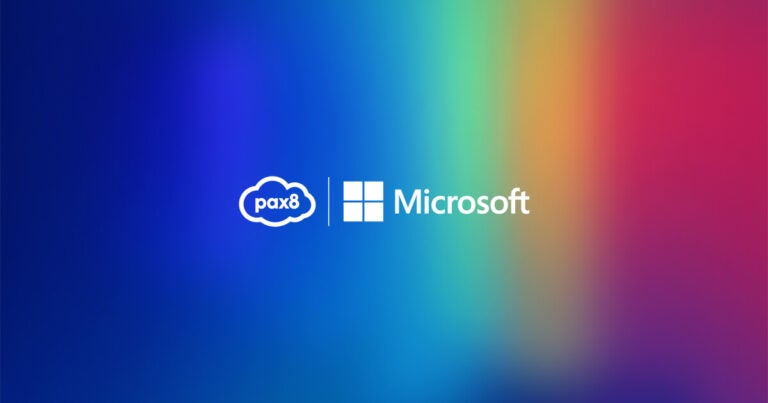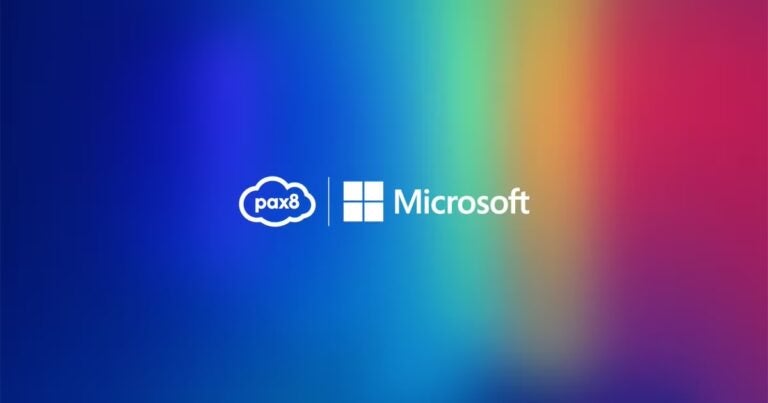Five steps to make sure your sales process leads to consistent results.
Forming Good Sales Habits
A repeatable sales process is like a good habit — do it over and over again and you’ll get positive results each time. Regardless of whether you are selling physical products or cloud products, knowing what steps to take when you’re with a client gives you the confidence and tools to close the deal.
In this article, we take some excellent advice and pointers from the Pax8 MSP Foundations class to show you what a successful, repeatable sales process looks like.
The Five Steps
Through our many years of experience, we’ve created a basic five-step sales process. One important piece of advice you’ll hear repeatedly is to follow every step. Then, based on your results, you can tweak the process over time.
1. Qualify a Lead
Not all revenue is created equal, which is why qualifying your lead is so important. It’s not just a money issue. Sometimes, a lead is quite profitable, but the amount of work required would overwhelm your MSP. Other times, personality clashes can create a difficult, and even toxic, business relationship. Qualifying a lead allows you to get a better understanding of what the expectations are when working with this client.
We like to break down qualifications into the following criteria:
– Size: Ask yourself, does the size of your company match the size of the client’s company? If you’re a single-person MSP and your client has 5,000 employees, doing a job for them would take an insane amount of time. It wouldn’t be a good fit.
– Reason for change: It’s always good to know why someone wants to change MSPs. This piece of information might give you insight into how you can or can’t help them.
– Timeline: Knowing the timeline of a project is a great step in helping you set up a proposal down the line. (Or come to the realization that this client’s project isn’t a good fit for your schedule).
– Relationship fit: Even if everything else on this list is a go, if you don’t get along with the client, it’s going to be a difficult working relationship going forward.
– Why “No”?: Understanding why a client isn’t a good fit for you gives you better insight into your own company and can help you better qualify a lead next time.
2. Discovery Meeting
Once you’ve qualified the lead, you’ll want to set up a discovery meeting as soon as possible. We suggest setting up this meeting at the end of your qualifying call. The discovery meeting is your chance to set clear expectations. Make sure to take good notes because these expectations will be used to craft your proposal.
Some examples of these expectations include:
– Give the client an overview of your process
– Get a budget from them and figure out how much they’re willing to spend per month
– Make sure everyone is aligned on the timeline, budget, and next steps
For an individualized touch, we suggest sending the client a little token of your appreciation. This doesn’t have to be an elaborate gift! You can put some swag or desserts into a gift box, along with some information about your company. This way, they can learn about you before your discovery meeting.
3. Business Technology Assessment
Before any work begins, you need to understand what type of technology the client currently uses. This is a crucial step in the sales process because, based on what kind of tech they have, it can change the budget and the timeline.
Be prepared for surprises! Keep your assessment appointment to about an hour and make sure to stick to that time. It’s smart to have an assessment checklist already prepared before you go in. Some items on the checklist can include:
– A rapid-fire assessment
– Any clarifying questions
– Documenting hardware
– Getting an accurate headcount of the employees
– Talking to their end users
– Anything else that can help you get to know their system as best as you can
4. Proposal
If you’ve gotten this far, congratulations! This is your chance to give a killer presentation and close the deal.
Let’s focus on the killer presentation part. For one, make sure you do this in person and don’t give them a pamphlet or document to read beforehand; otherwise, why would they pay attention to you? You want to be the one controlling the presentation, the narrative, and the meeting.
The main things that you want to include in the presentation are:
– Four to five key takeaways that include pain points you’ve already talked about, big picture items, and an evaluation of their current environment.
– One or two numbers such as the monthly fee and/or the initial onboarding and hardware costs. To avoid getting caught in the nitty-gritty details, just stick to the big picture budget.
– A comparison of your proposal to the original budget. If you come in under budget, make sure to point that out.
– Color coding and clean visuals to help get your point across in the presentation.
Once you’ve finished your presentation, take a step back and let the information sink in. It may be a few moments of awkward silence, but you can power through it.
If you find that you’re getting too many objections, this may mean that there was a miscommunication in the previous steps. At this point in the sales process, the answer should be a simple yes or no from the client.
To wrap up the proposal presentation, you’ll want to:
– Clarify any questions
– Get a final user list
– Send the proposal and the contract
5. Agreement
This is the last step of our repeatable sales process. Send the agreement over to the client, make sure you have the correct number of users, and provide a scope document that gives them an overview of the onboarding process. Then, set up a meeting to close the deal.
A Recap
Remember, don’t waste time on a lead that doesn’t fit and make sure to follow every step of this process. By doing so, you put yourself in an advantageous position if and when you decide to scale up. Any new salespeople you hire will be able to follow a written process, avoiding any confusion. Of course, if you do decide that you want to tweak the process, always do it slowly so you can make connections between changes in revenue and changes in the sales process.
Looking to delve deeper into one or all of these steps? Curious about how other MSPs do it? Want to chat with MSP veterans and leaders? If you answered yes to any of these questions, our MSP Foundations class might be right for you!





